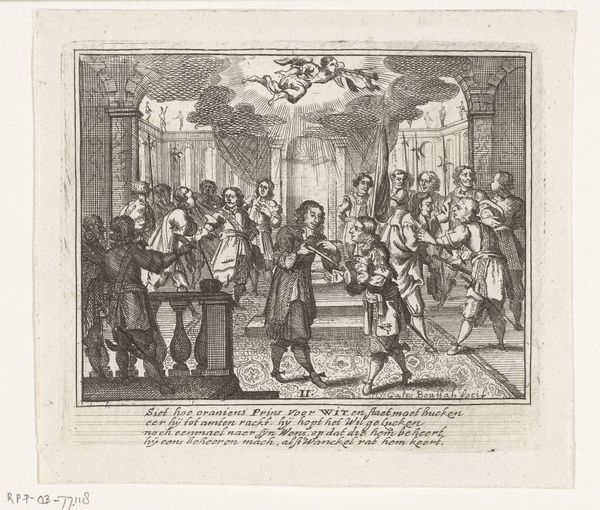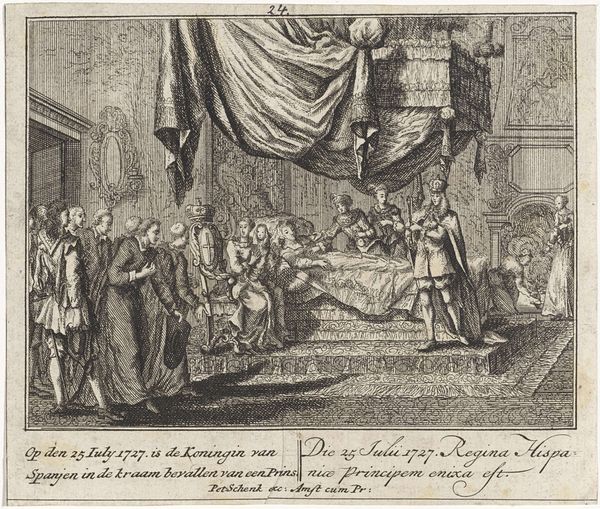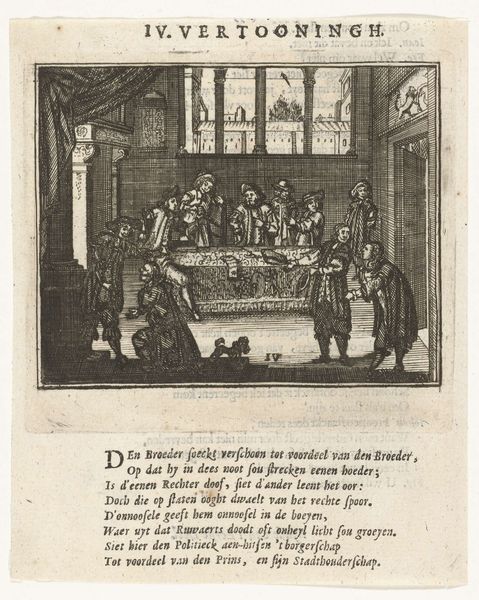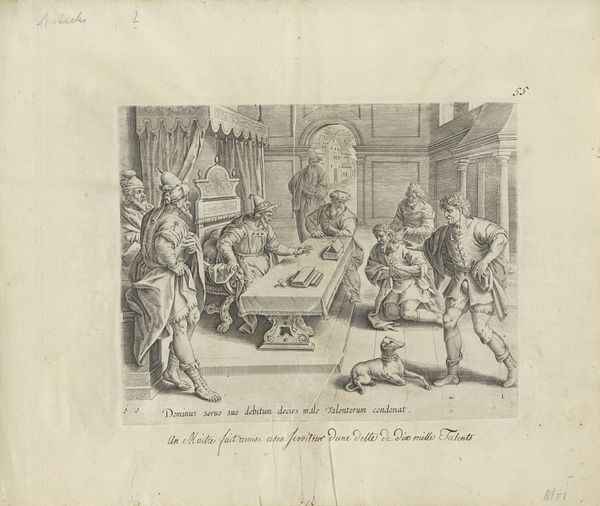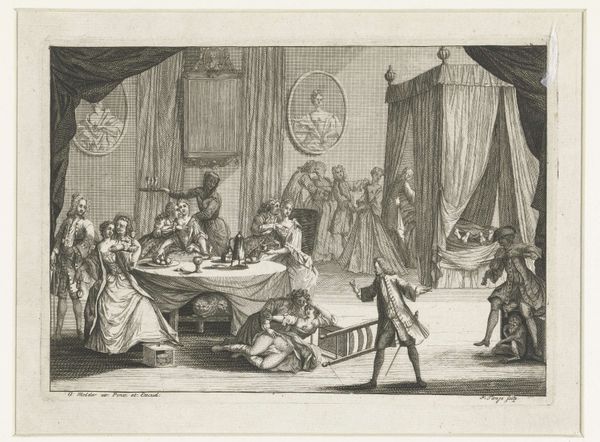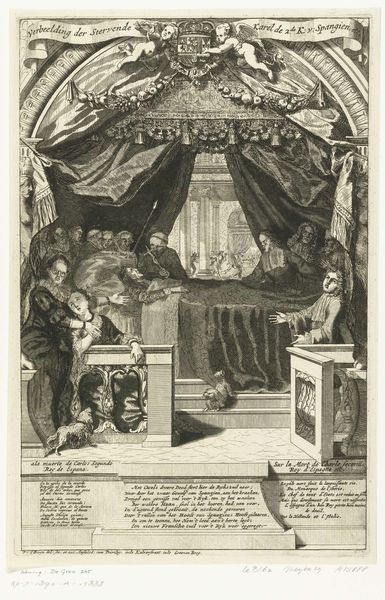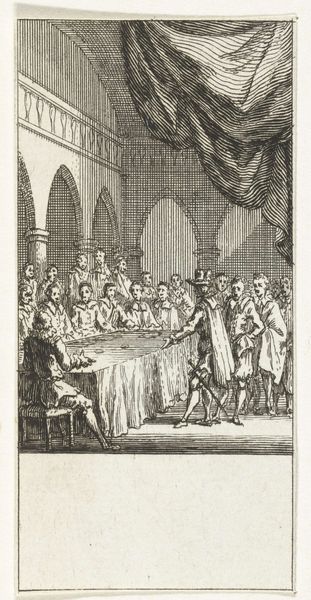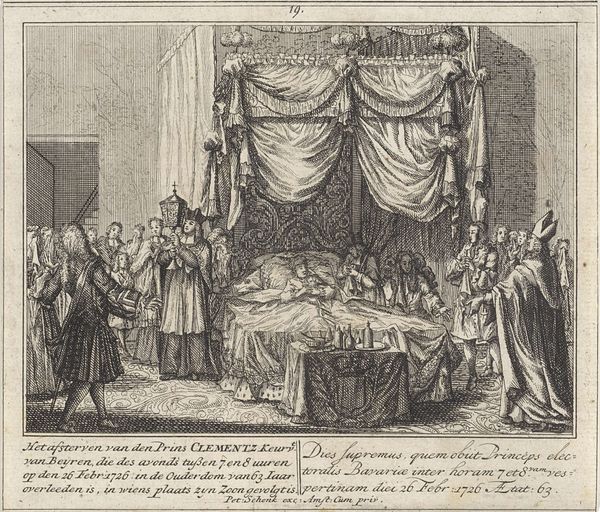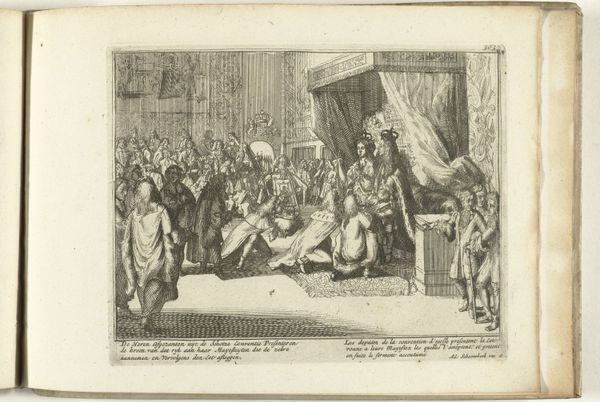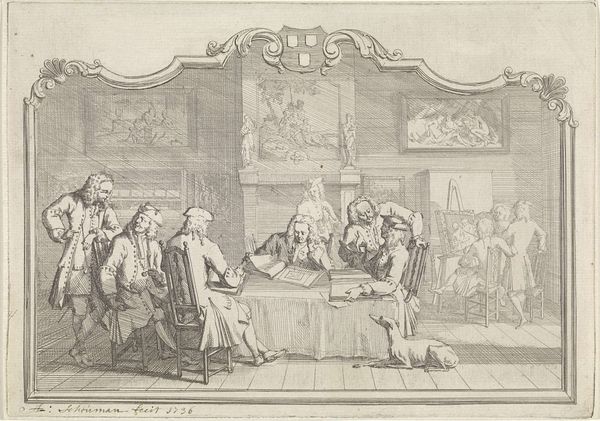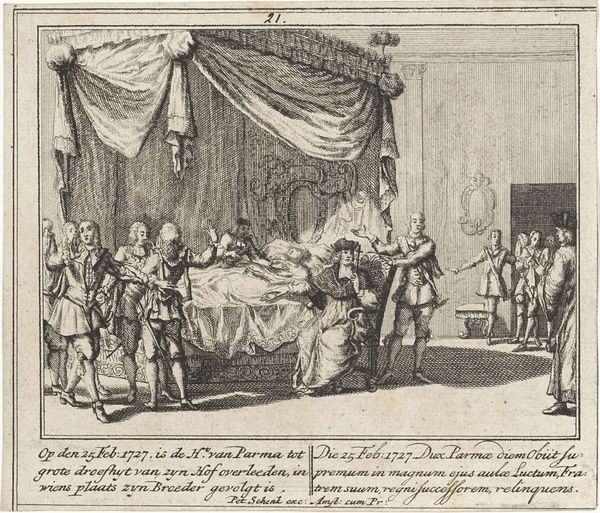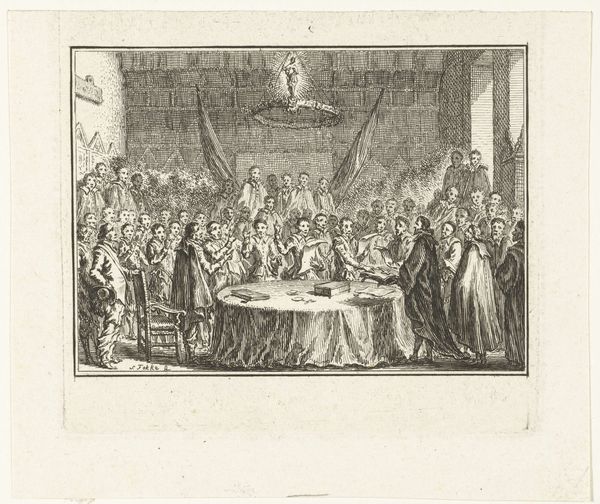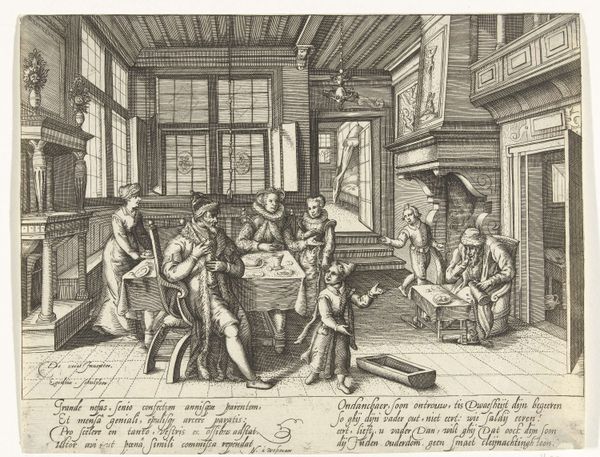
print, etching
#
narrative-art
#
baroque
# print
#
etching
#
history-painting
Dimensions: height 120 mm, width 135 mm
Copyright: Rijks Museum: Open Domain
Editor: We're looking at Gaspar Bouttats' "Johan de Witt pleit voor zijn broer, 1672," an etching at the Rijksmuseum. I’m struck by the intensity of the scene; it seems really dramatic, the composition focused on the figures but also revealing a really elaborate interior. What compositional elements jump out to you? Curator: Indeed. Note the balanced use of light and shadow; the engraver uses fine hatching to give volume to form. The composition guides the eye--observe the deliberate positioning of figures which direct the viewer's gaze toward the kneeling figure. Do you see how Bouttats employed both linear perspective and atmospheric perspective to establish a visual hierarchy? Editor: I see how that highlights the focal point. So it’s not just what’s happening, but *how* he’s presenting it that builds the drama? Curator: Precisely. Consider, too, the material qualities. Etching allows for a delicacy of line. Bouttats uses this medium to full potential, to convey emotion and suggest complex forms in a tight space. The line quality alone tells the tale. Look at the clothing - the shapes and pattern work. How would it feel to wear these clothes and carry the presence they create? Editor: That’s fascinating! The technique itself underscores the gravity of the situation, everything, from the expressions of the people involved, to the buildings outside the windows. I'd never thought about printmaking that way. Thank you! Curator: My pleasure. It is through considered visual analysis that we access new meaning and expand our experience of a work of art.
Comments
No comments
Be the first to comment and join the conversation on the ultimate creative platform.
